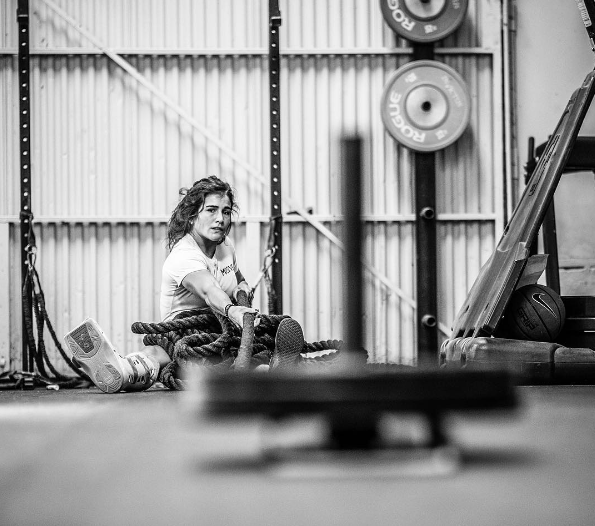
4 Ways To Improve Performance In Competition
Written by Nichole DeHart
We often tell our athletes to ‘stay in their own lane’ when competing. This means our athletes are to stay focused on what is happening in their own lane, which is themselves, and not be distracted by other athletes and what they may be doing. There isn’t anything you can do to control what your opponent is doing in a competition, right? The only thing you can control is yourself and how you tackle the event. Otherwise, focusing on the person(s) in the lane next to you can easily distract you from putting in your best performance. Staying in your own lane doesn’t mean that you aren’t going into the event with a competitive mindset or that you aren’t making note of where your opponents are at in the last few reps of the event; but your overall mindset should be on your performance and how to maximize your efforts in the event.
With competition nerves and fear of falling short, many athletes go hot out of the gate and have no clue about pacing based on their strengths and weaknesses. These athletes can easily lead for the first portion of the workout and continue to push the pace until they redline. This is not a good strategy as, more often than not, they quickly drop to last place due to a poor management of their competitive emotions, poor pacing strategies or by not ‘staying in their own lane’. There is also the athlete who over paces their events; they have too much pacing strategy in the workout and, instead of trusting themselves, will over-pace by taking too many unnecessary breaks.
If you are an athlete who overthinks in competition or over-paces, then try the following tips to help you improve on your performance while competing.
1 – Resist The Chalk Bucket! Too many athletes will use the chalk bucket as a reason to take a break. View going to the chalk as an opportunity for another athlete to pass you by. Instead, chalk up the pull-up bar where you will be performing your movements or the barbell before the event and have a piece of chalk sitting on one of the j-hooks or on the floor next to you for easy access. When you do need to get chalk, make it a quick transition and get back on the bar or on the barbell.
2 – Postures Of Defeat. Are you an athlete that likes to rest with their hands on their knees, head looking down at the floor while you gasp for air? If so, ask yourself if anything good has ever happened in that position…nope, nothing good happens there! So why would you rest there? Instead, when you do take a break, practice standing tall, keeping your eyes open and taking big, calming breaths. This will help you in many ways, including your mindset. You are more likely to get right back into the workout when standing tall then going into a posture of defeat and letting your mind start to feel sorry for yourself. Stand tall, eyes open and calm breaths.
3 – Know Your Pace. Every athlete is different. So, know what your pace is and know where your red line is. When you are training, test out what that red line feels like for you. Keep pushing that red line in training (only when you feel good) so that in competition, you know not to go to that place but to go to the edge, right before you hit that redline, and maintain that pace. Your last round in a workout should look similar to the first round or, at least, not have a significant drop off.
4 – Visualize. There is a huge benefit to implementing a daily practice of visualization. Most elite athletes advocate for the use of visualizations and can attest to its help in their performance. Visualizing can help athletes who struggle with self doubt, fear of failure, competition nerves, etc. It is one of the most underutilized tools in competitive sports. Visualizing can also benefit athletes on the day of competition as it can help an athlete control their nerves and focus their energy to the event instead of worrying about the outcome of the event.
By applying just these four things, you will see a major improvement in your competition performance!
Matt Beals, a stud Invictus Masters athlete, showed a great performance in Event 3 at the 2016 Granite Games. He played his own game in that event and, as you see in the video, applied the points mentioned above to edge out Masters 50-54 Games Champion Ron Ortiz. You can watch the video below to see how Matt avoided the use of the chalk bucket and avoided postures of defeat which helped him get right back on the rope climbs and paced the event perfectly. He didn’t get flustered that Ron was ahead of him for most of the event because he knew what his pace was, knew he couldn’t control what Ron was doing and had confidence that he would finish strong. This is a great example of how to execute a solid performance in an event.
Also Check Out…
Lessons, Epiphanies And Other Life Changing Moments